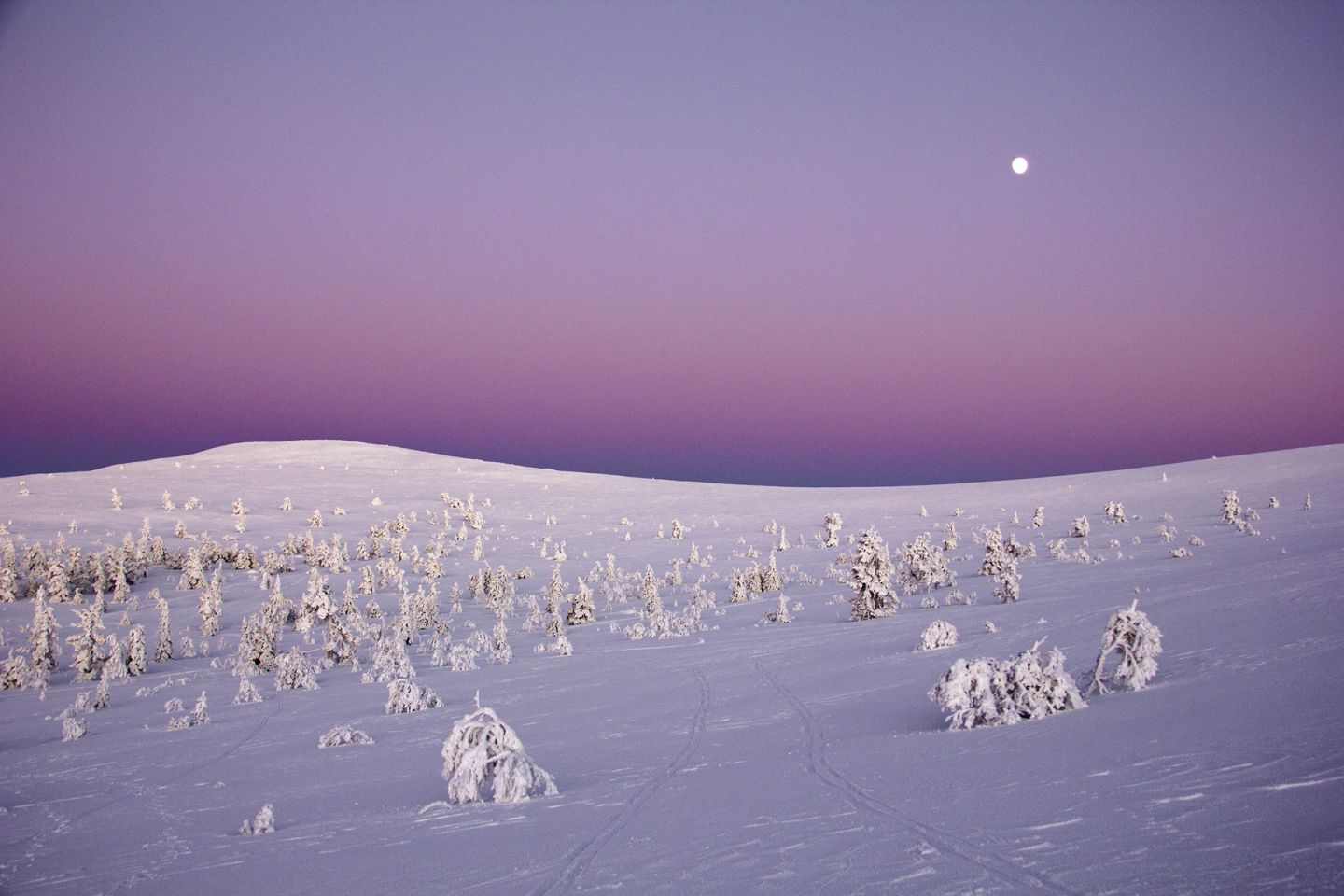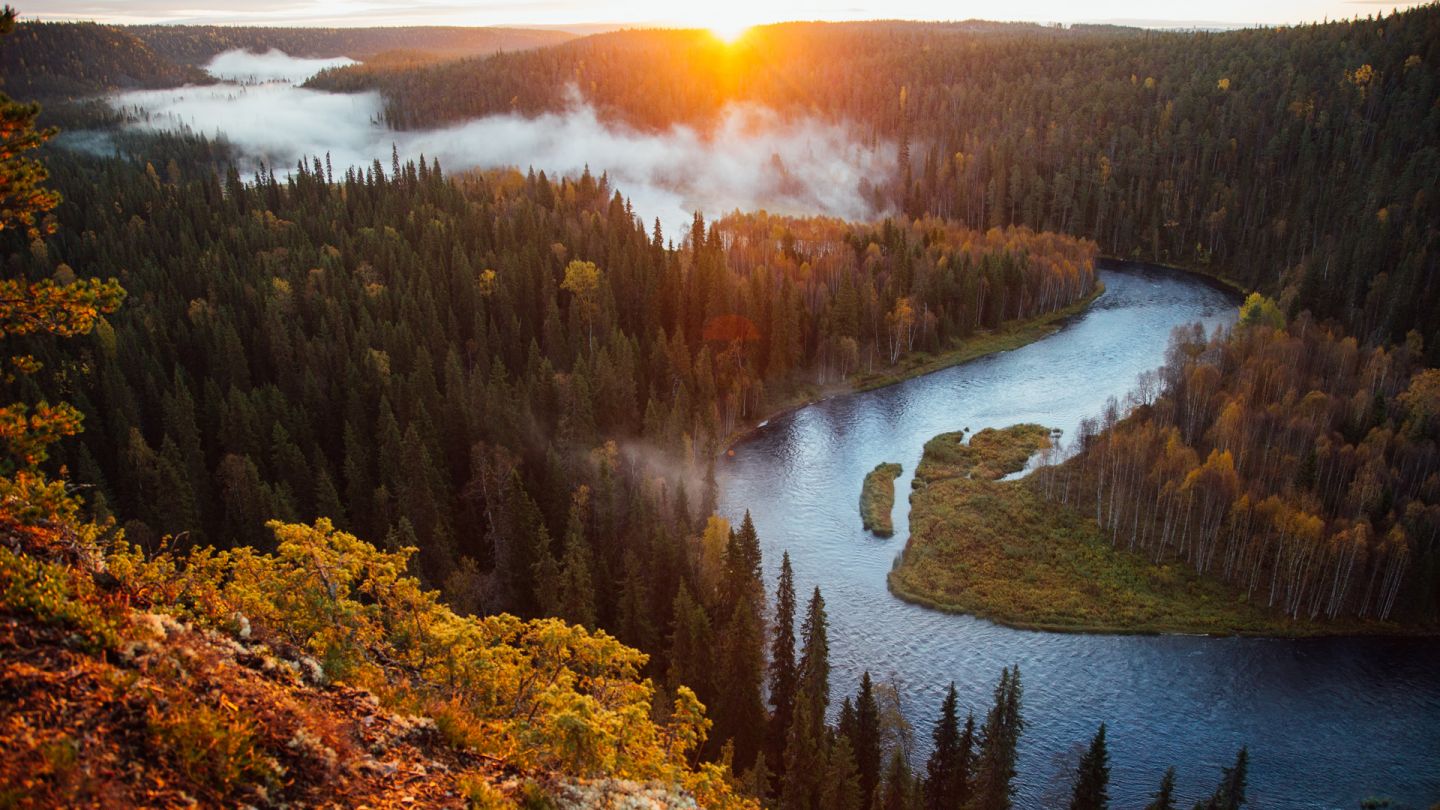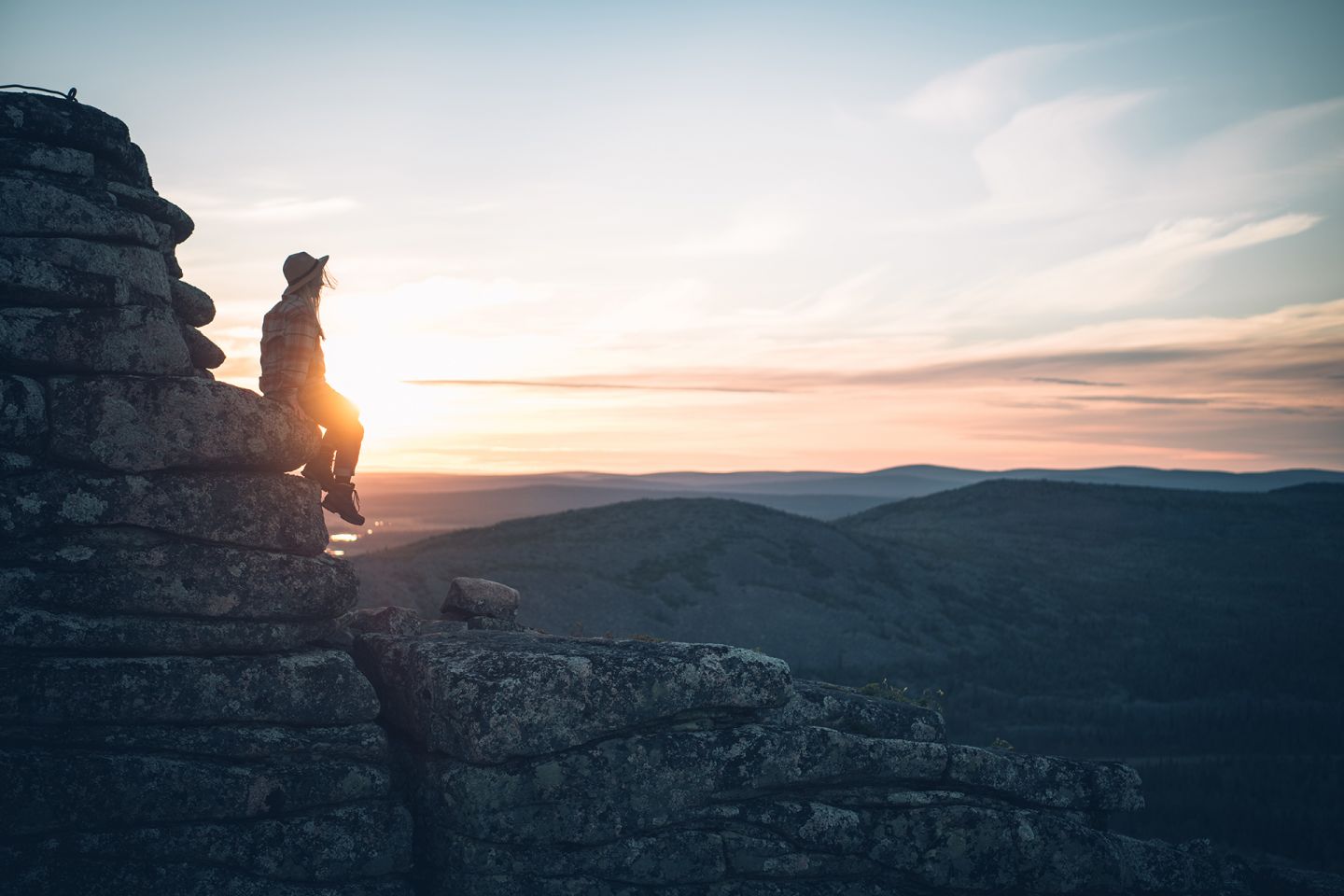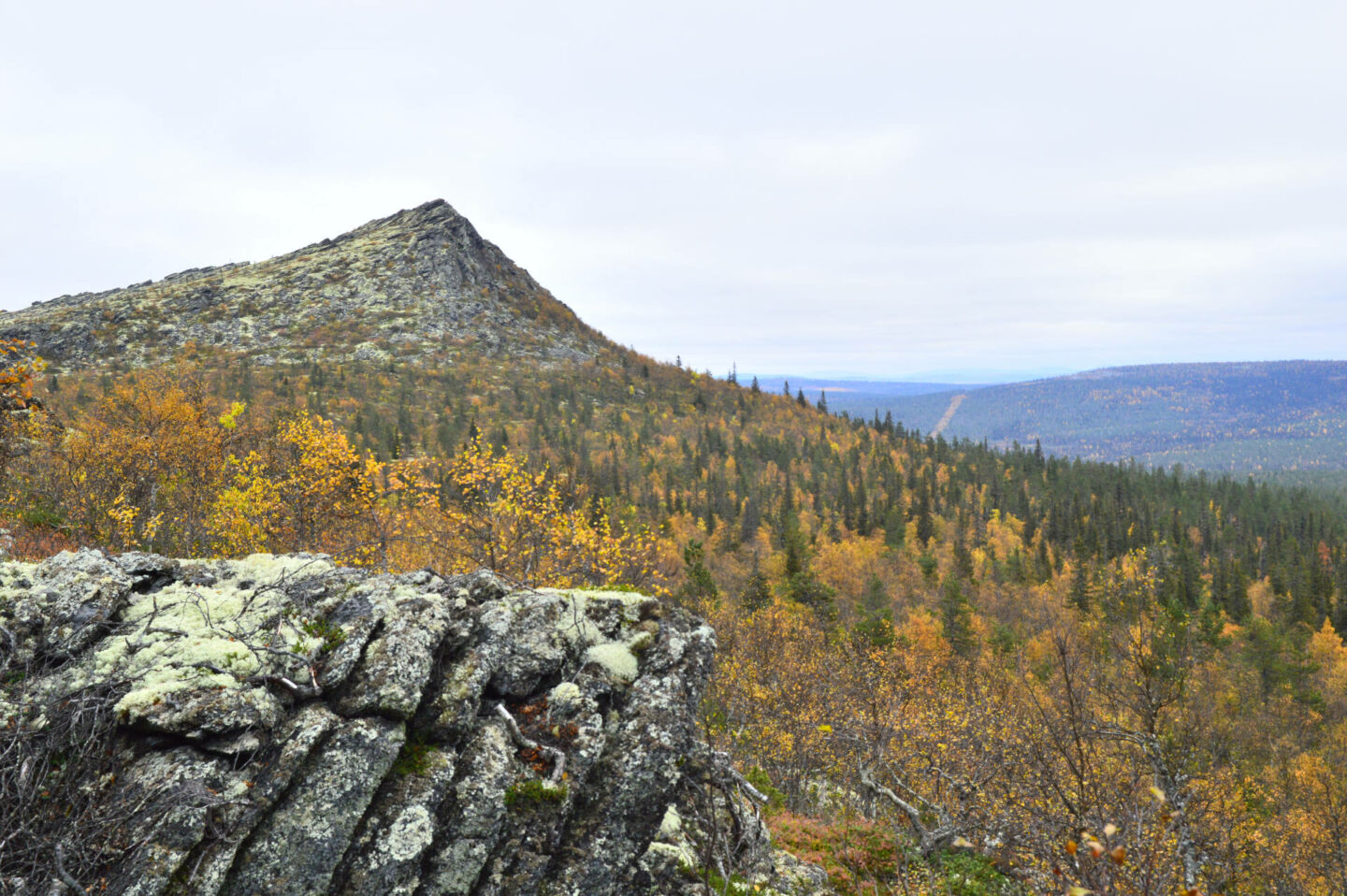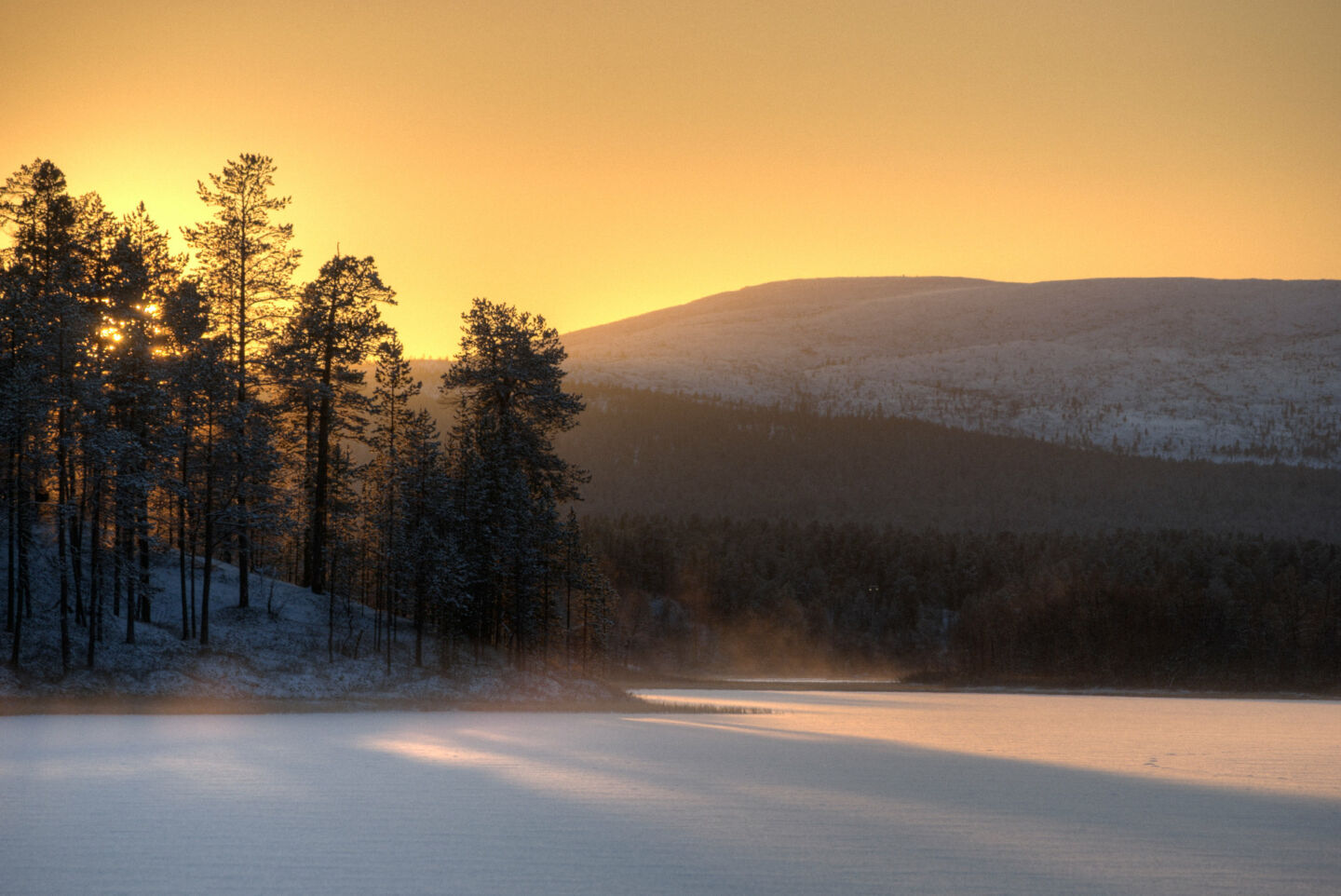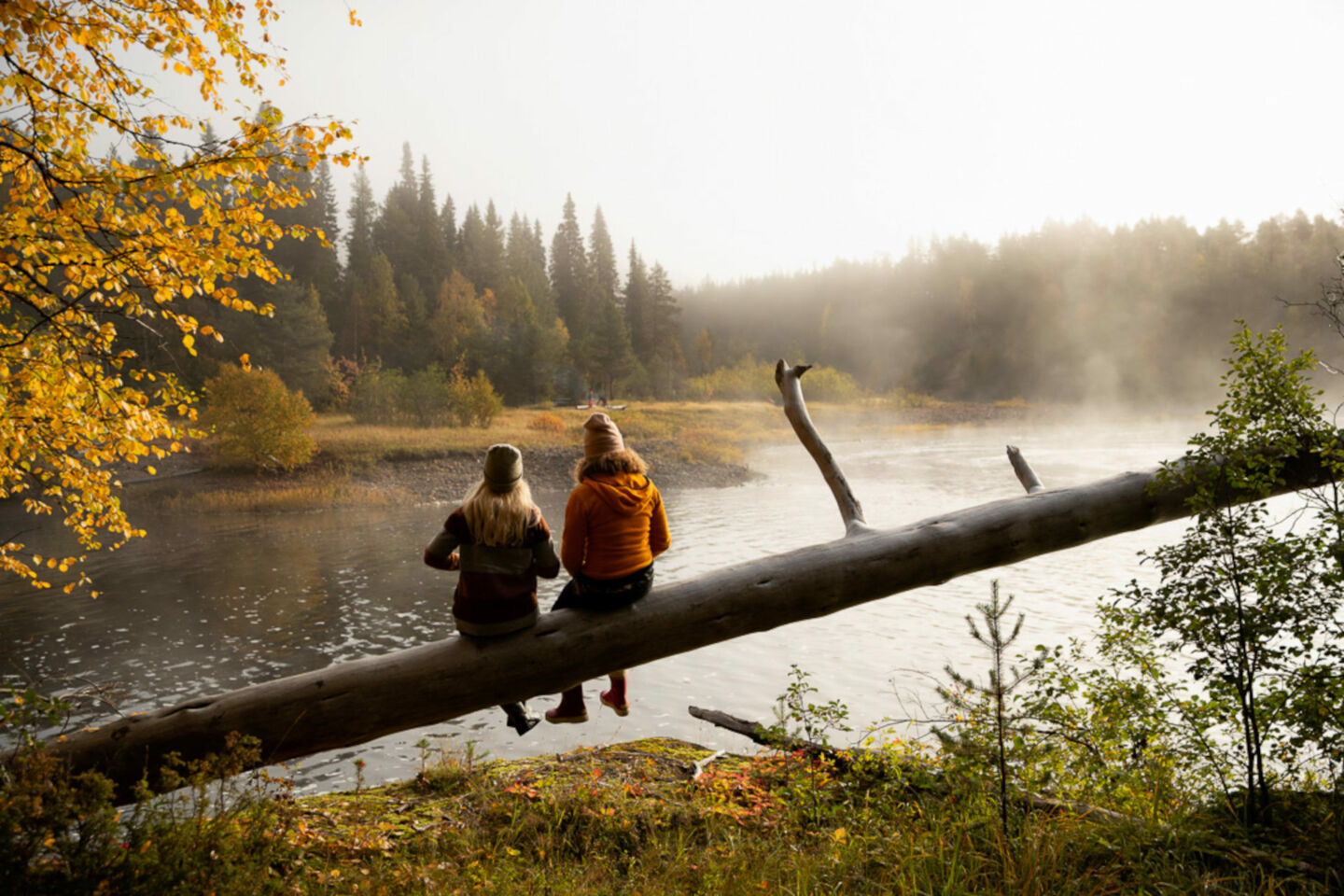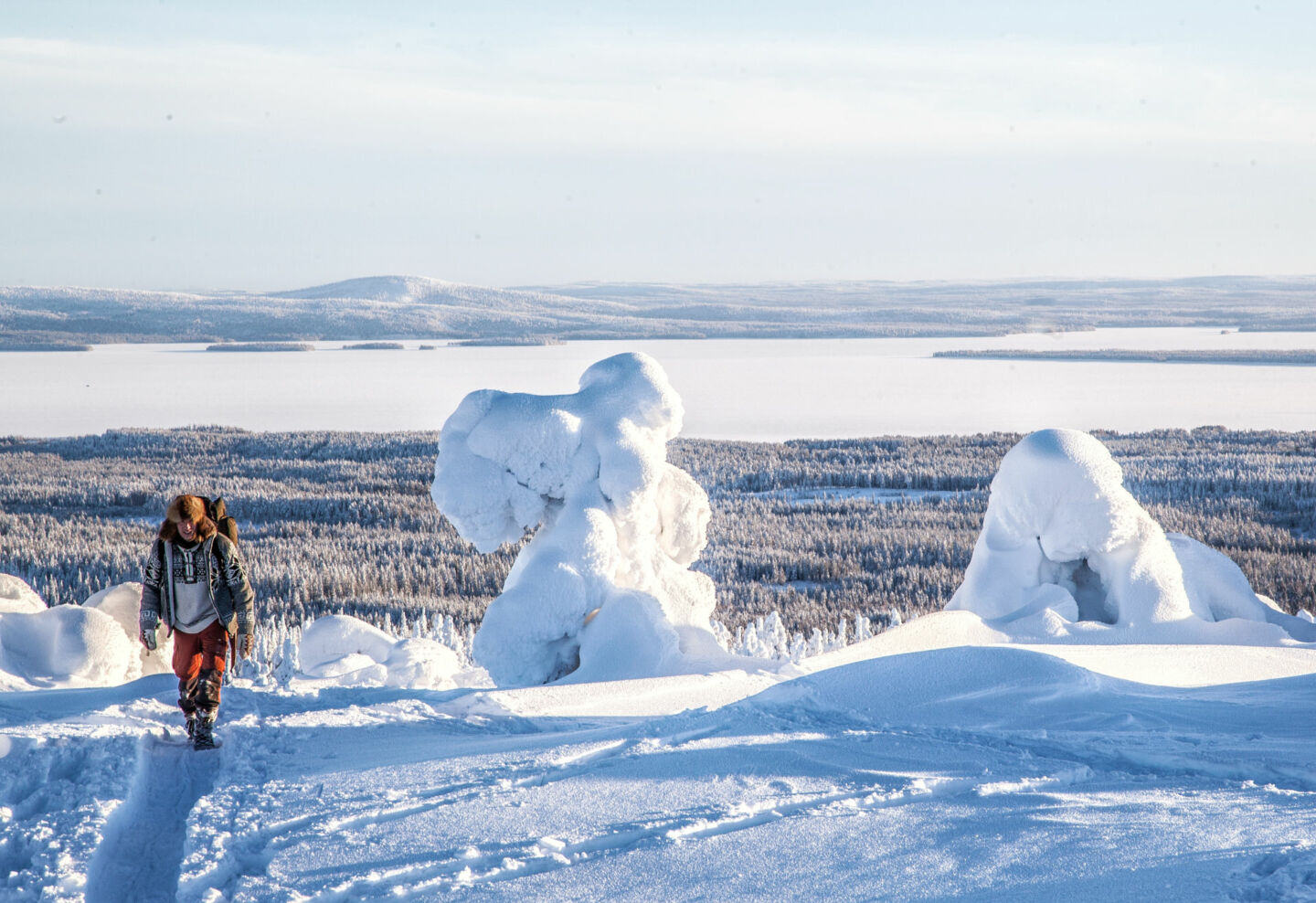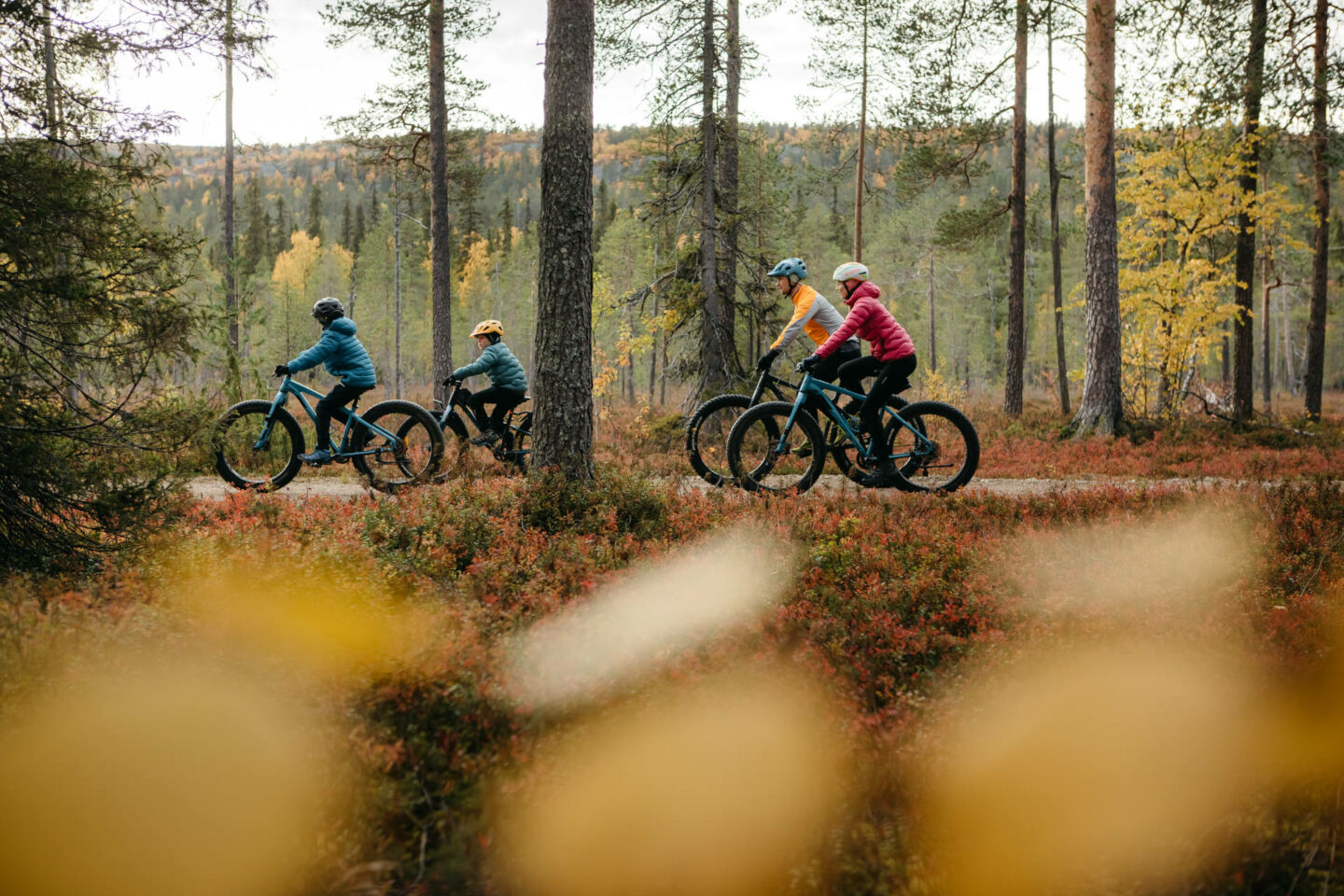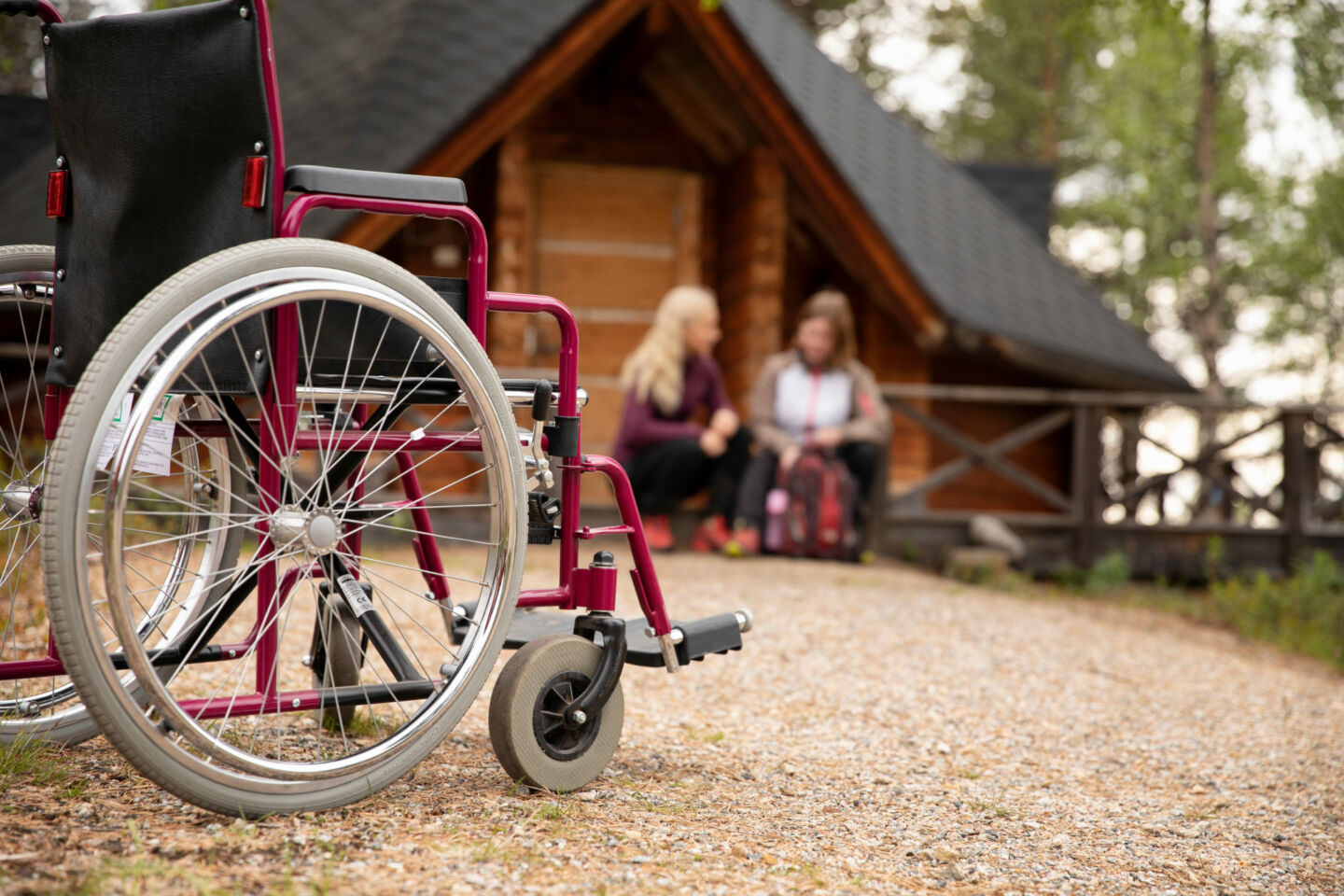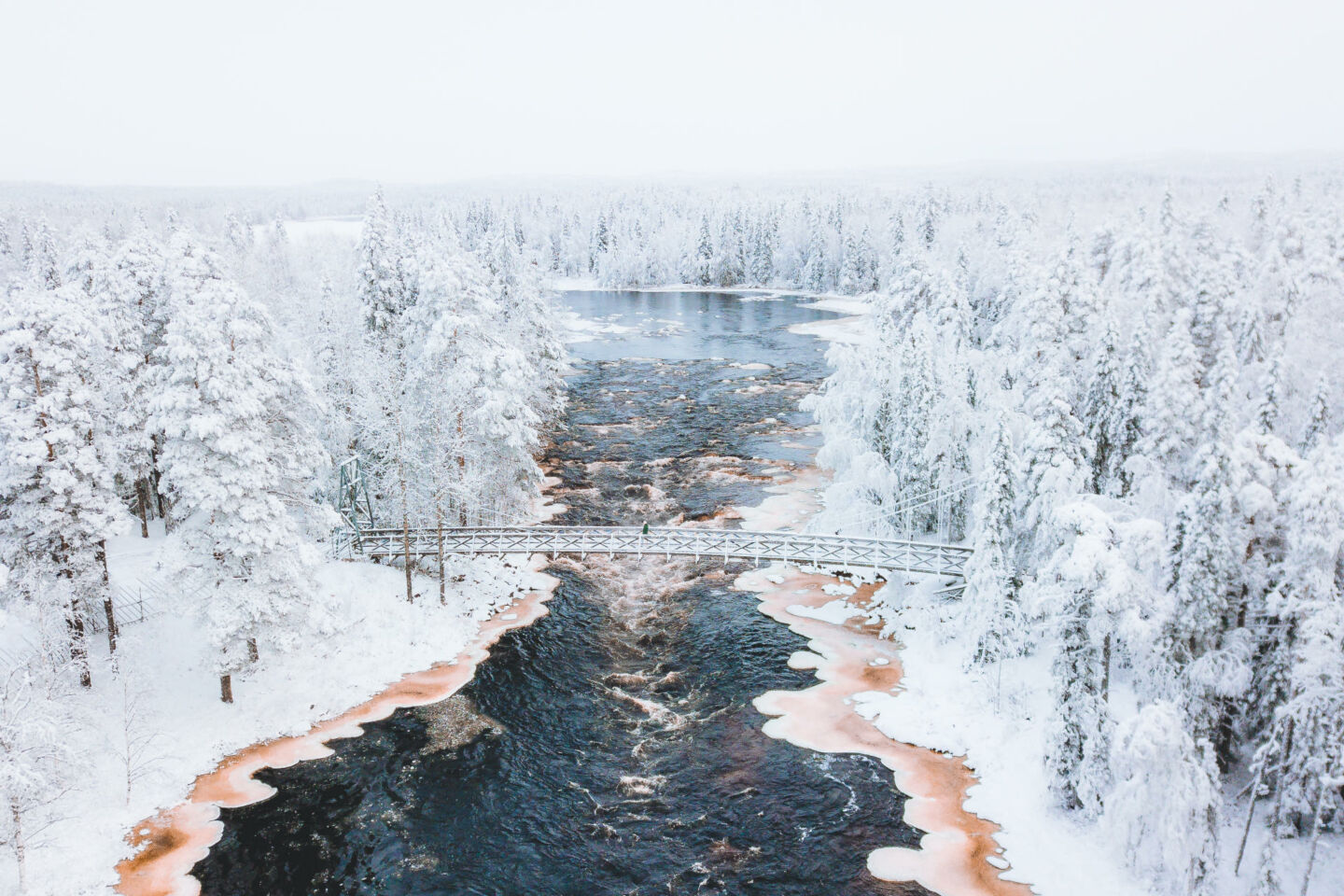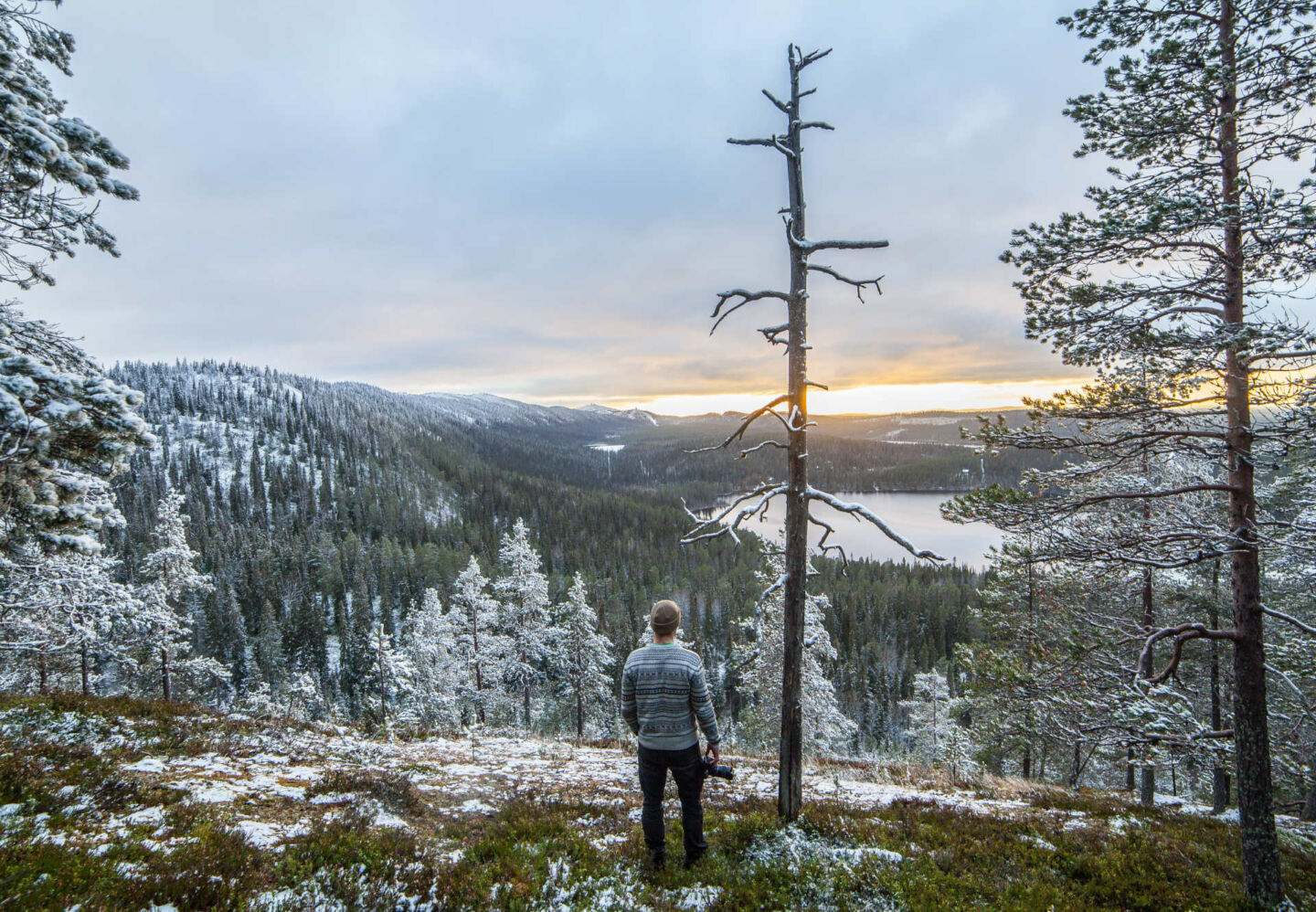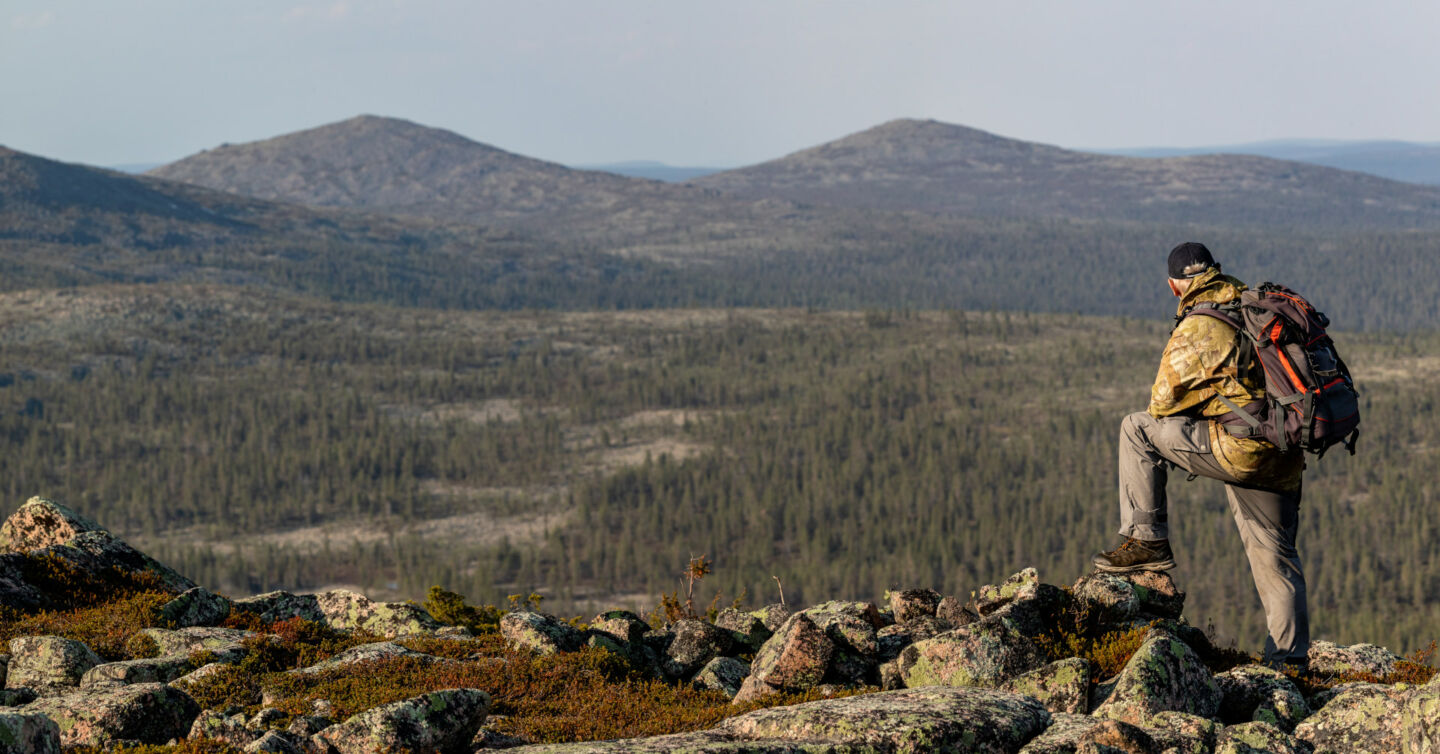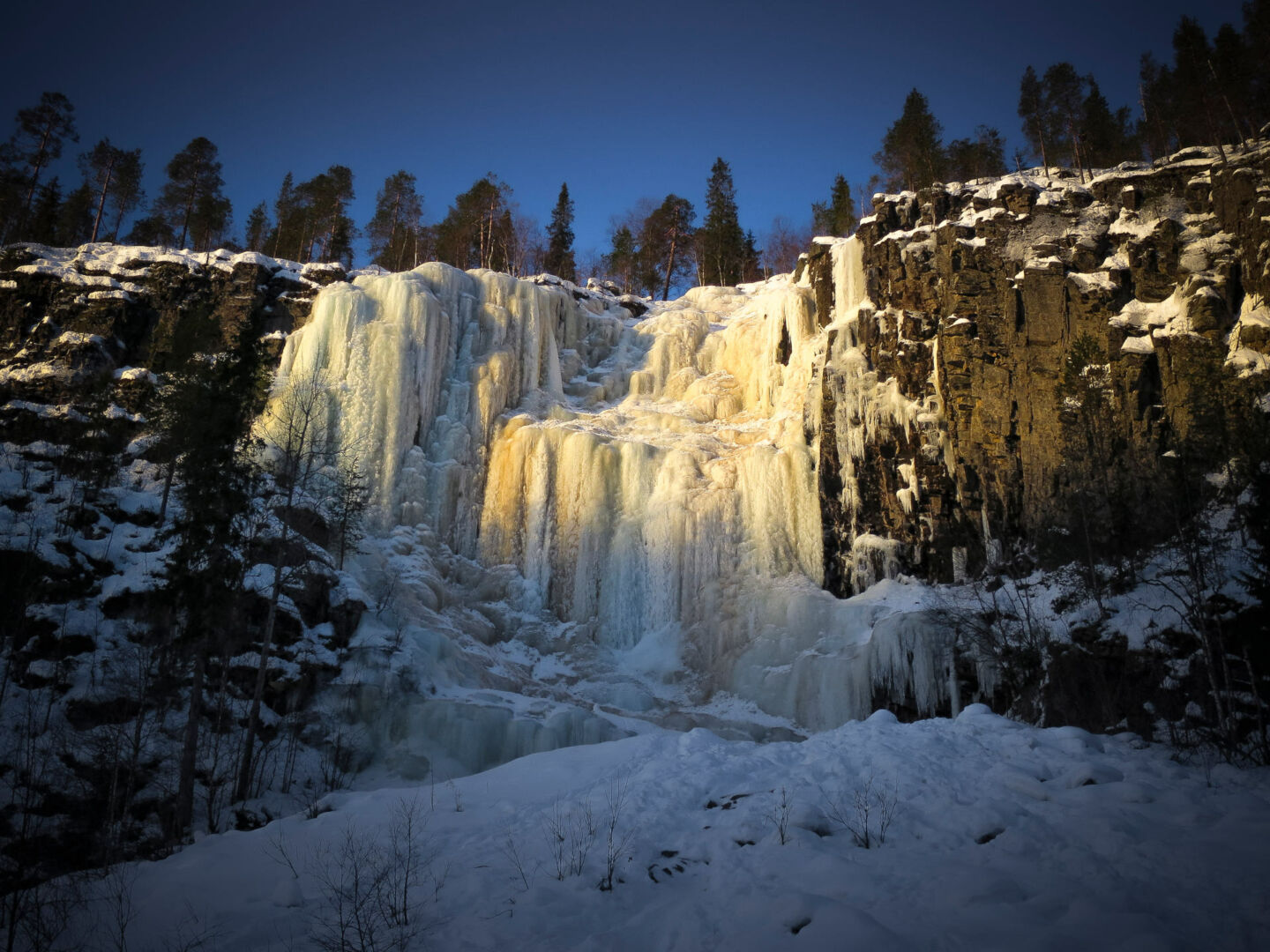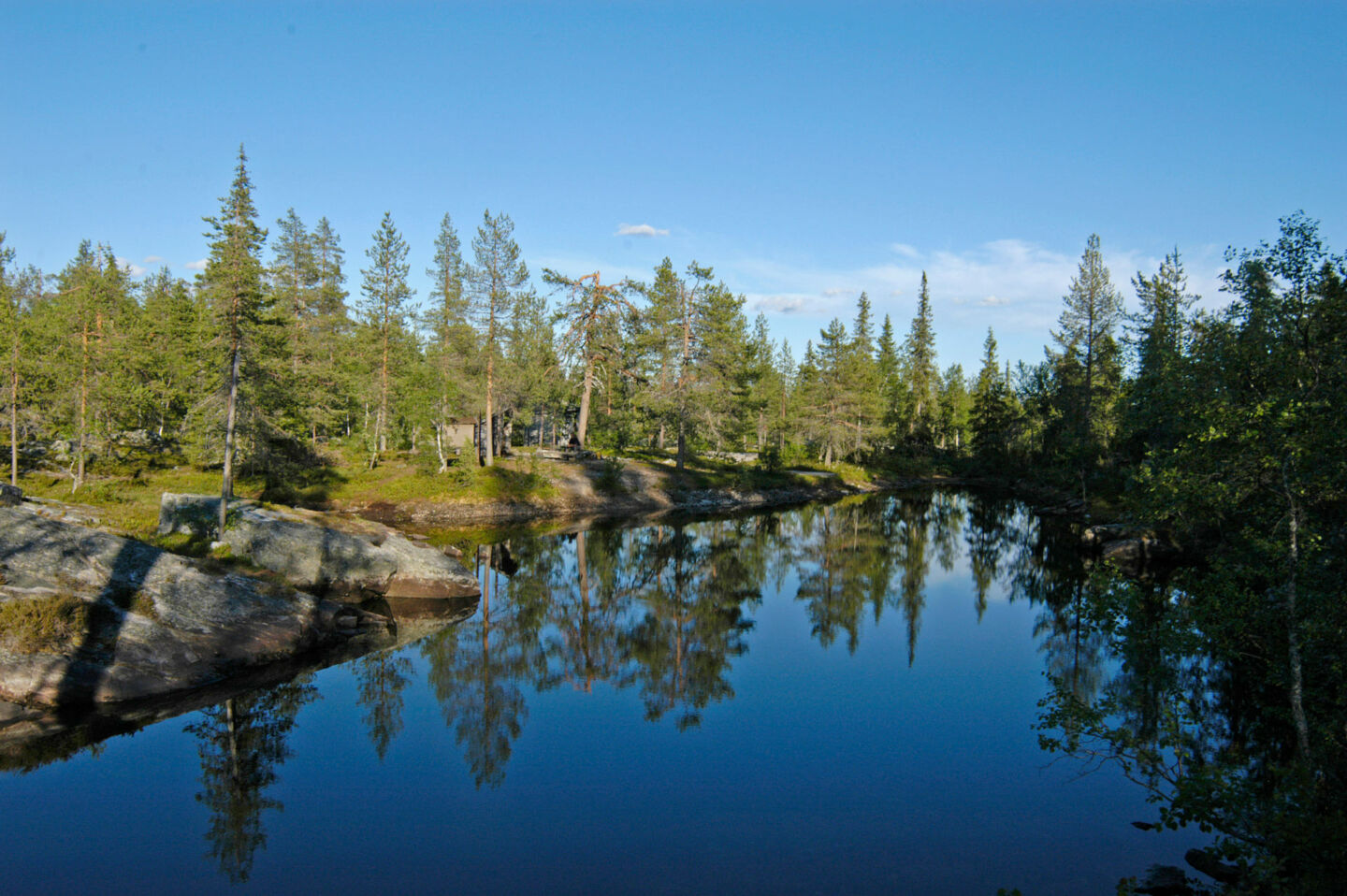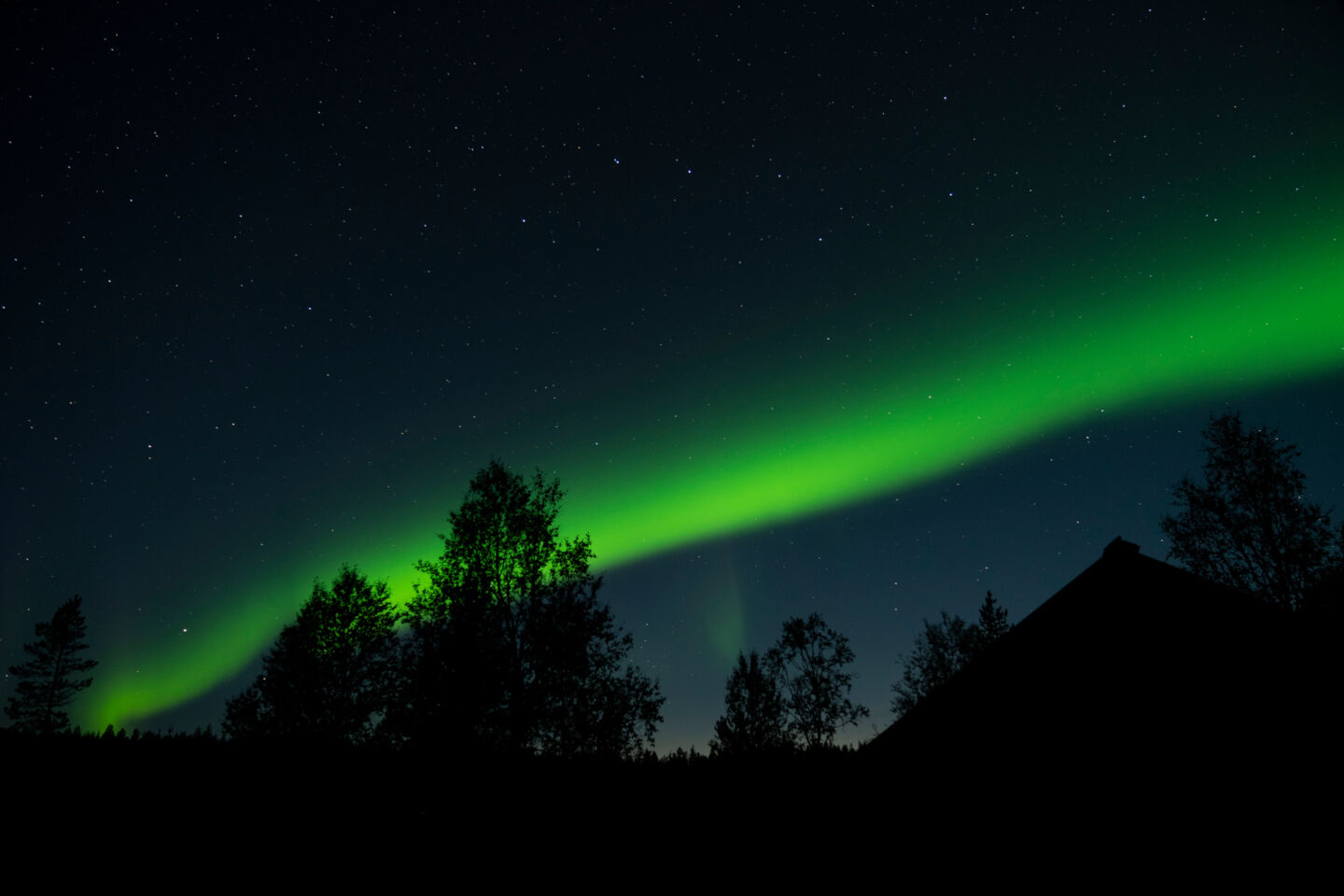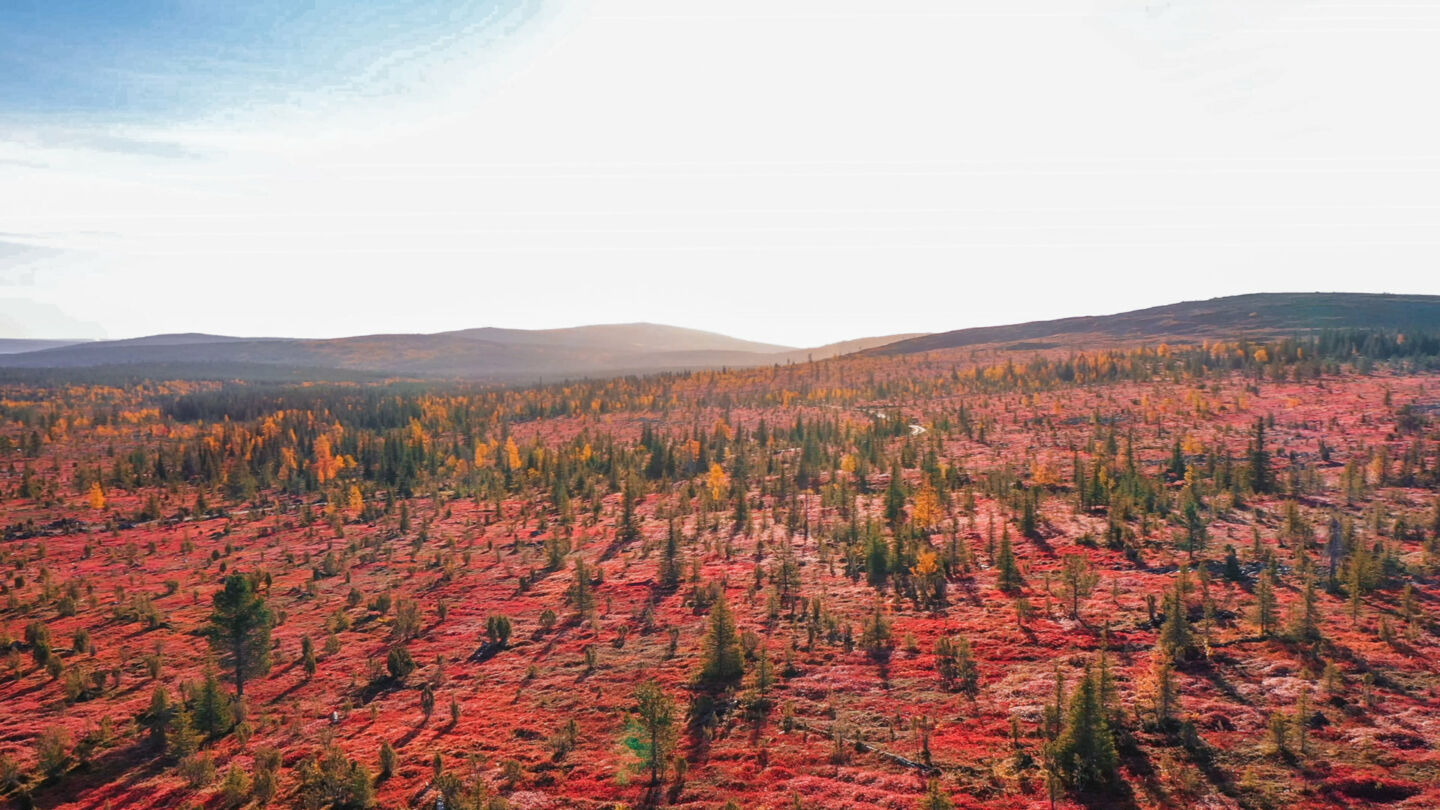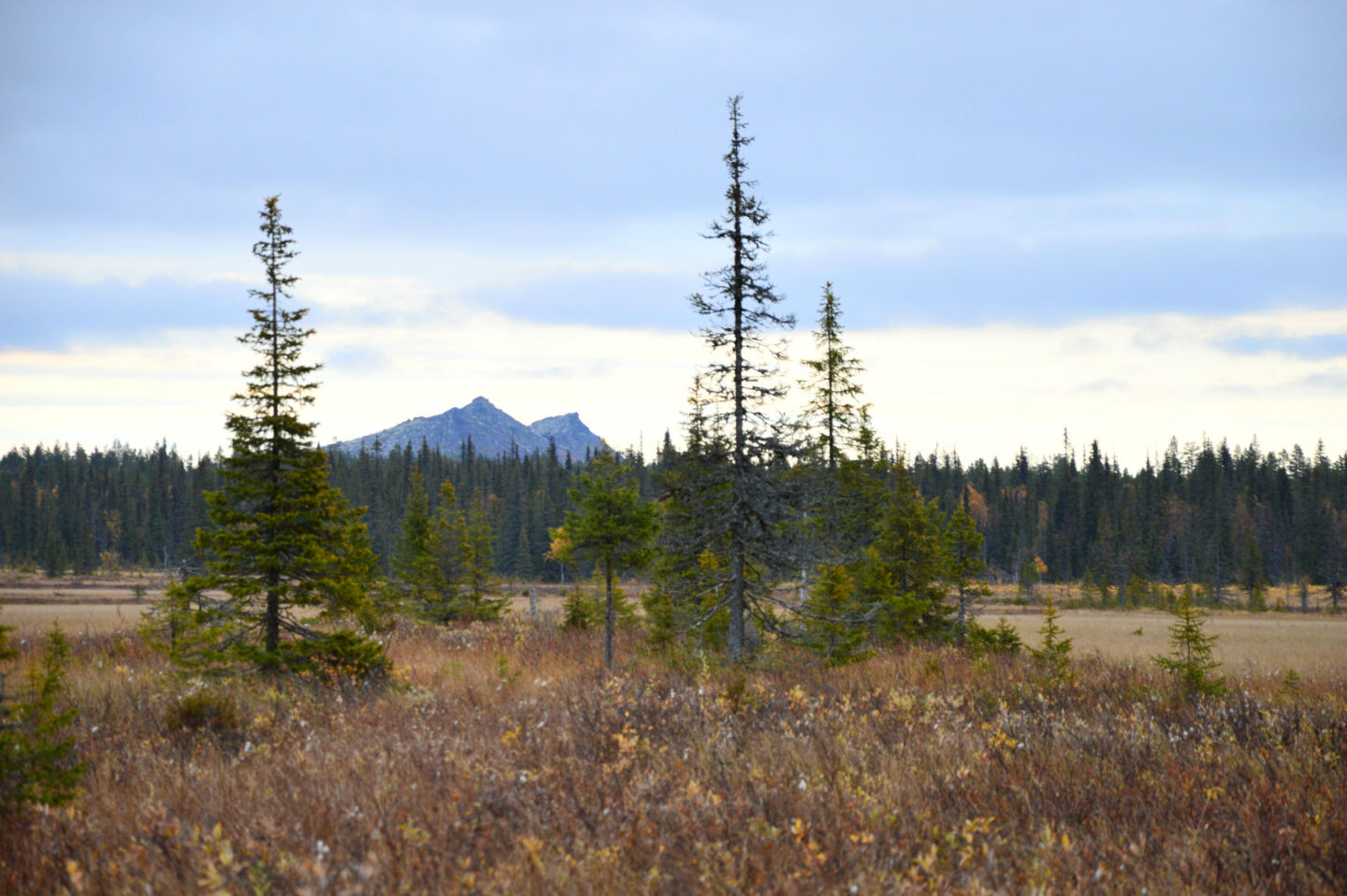Finnish Lapland is vast. Wild and green. White and silent. Visit our wonderful national parks, complete with trekking routes, vantage points and unforgettable vistas.
Lapland is home to the three largest national parks in Finland, as well as massive nature reserves, accessible hiking areas and protected forests, bogs, waterways and more. Read on for more information and details on some of our favorite wonderful national parks.
Lapland’s National Parks
- Urho Kekkonen (UKK) National Park
To the north are the remnants of Lapland’s once great mountains. That’s why UKK is one of the most popular national parks. Period. Home to Santa’s secret workshop mountain (Mt. Korvatunturi), this is the perfect place for hiking for days, skiing your heart out and exploring unbroken Arctic wilderness from Inari-Saariselkä to Savukoski.
- Lemmenjoki National Park
Named for the river that snakes its way through the park, Lemmenjoki is number one. It’s the largest national park in the country and one of the largest in Europe. (It’s bigger than the country of Luxembourg!) Come explore the northern cultures of gold digging, Sámi livelihoods, and an expanse that snuggles up to the edge of the tundra.
- Oulanka National Park
Welcome to perhaps Finland’s most photogenic national park. You can hardly walk around a corner or crest a hill before your breath is whipped away by the beauty and majesty of Finnish forests and stony peaks. Oulanka stretches from the vast forests of Salla to the southernmost fells of Ruka-Kuusamo, and is home to Finland’s most popular hiking trail, the Bear’s Trail.
- Riisitunturi National Park
Every winter, a combination of humidity and freezing cold temperatures turns Posio’s pines and birches of Riisitunturi into another world entirely. Crowned in snow, these lumpy wonders summon up trolls and mythical creatures from the depths of imagination.
- Pyhä-Luosto National Park
To see the kind of stony fells that populate Pyhä-Luosto, you usually have to travel much much farther north. But this national park is full of spectacular fells, deep ravines and places with names full of significance (for example, Pyhänkasteenputous, which means Holy Baptism Waterfall). Lace up your hiking boots, grab a snack, and get ready to explore!
Highlight: Hiking Areas
Finland is home to many hiking areas, with trails that range from a light walk all the way to fun challenges. In Lapland, these hiking areas include ski paths, camping sites, lean-tos, and more. The hiking areas are all designed to be as accessible as possible for visitors with physical disabilities. Here are a couple of our faves.
Lapland’s Nature Reserves & Other Protected Areas
In addition to Lapland’s national parks and official hiking areas, there are lots of protected wilderness areas that welcome visitors. Sometimes, these wilderness areas even become national parks, as is expected with the Sallatunturi Fell Area in Salla!
Here are some of our recommendations for spectacular wilderness experiences:
- Kevo Strict Nature Reserve in Utsjoki*
- Auttiköngäs in Rovaniemi
- Valtavaara in Ruka-Kuusamo
- Sompio Strict Nature Reserve
- Simojärvi and Soppana in Ranua
- Korouoma in Posio
- Kivitunturi in Savukoski-Korvatunturi
- Ilmakkiaapa in Sodankylä
- Luiro Mires in Pelkosenniemi and Savukoski-Korvatunturi
Our Wilderness Areas
A wilderness area and a “Wilderness Area” are not the same thing, not exactly. Lapland is home to all of Finland’s official “Wilderness Areas,” which are protected lands. Rougher than National Parks, these lands offer tougher hiking trails and fewer (if any) facilities. If you’re looking for a real adventure (and you know what you’re doing), you will love exploring these Wilderness Areas.
- Hammastunturi Wilderness Area in Inari-Saariselkä
- Tuntsa Wilderness Area in Salla
- Kaldoaivi Wilderness Area in Utsjoki
- Paistunturi Wilderness Area in Utsjoki
- Kemihaara Wilderness Area in Savukoski-Korvatunturi
- Vätsäri Wilderness Area in Inari-Saariselkä
* A word on Strict Nature Reserves
There are many Strict Nature Reserves in and near Lapland. They are generally not open to the public, as they were established for conservation, preserving Sámi livelihoods, and nature research.



